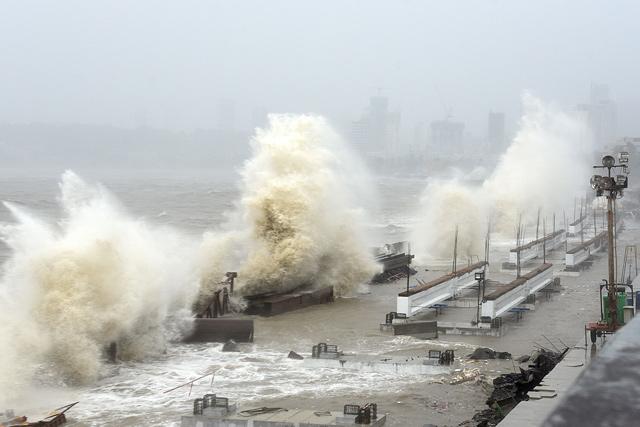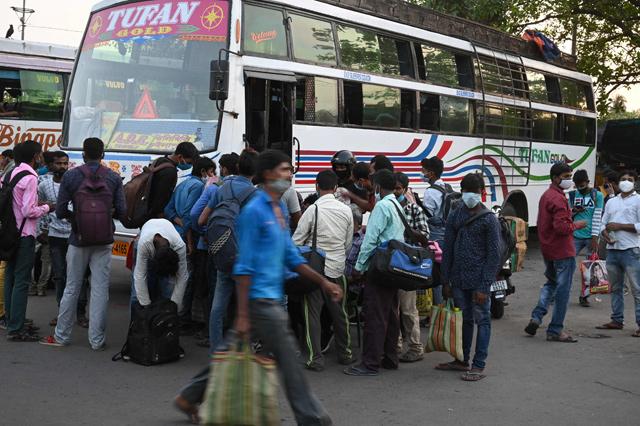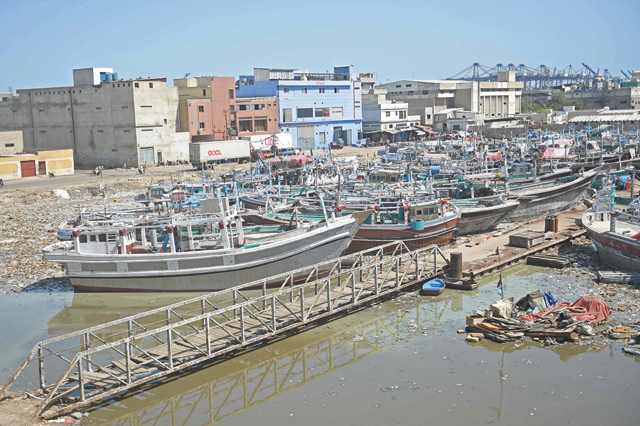You are here
Monster cyclone heads for COVID-stricken India
By AFP - May 17,2021 - Last updated at May 17,2021

Waves lash over onto a shoreline in Mumbai on Sunday, as Cyclone Tauktae, packing ferocious winds and threatening a destructive storm, surge bore down on India, disrupting the country’s response to its devastating COVID-19 outbreak (AFP photo)
AHMEDABAD, India — A major cyclone packing ferocious winds and threatening a destructive storm surge bore down on India on Monday, disrupting the country’s response to its devastating COVID-19 outbreak.
At least six people died over the weekend in torrential rains and winds as Cyclone Tauktae, according to press reports the biggest to hit western India in 30 years, swept over the Arabian Sea with Gujarat state in its sights.
The “Extremely Severe Cyclonic Storm” was due to make landfall on Monday between 8-11 pm (14:30-17:30 GMT) with winds of 155-165 kilometres per hour gusting up to 185 kmph, the Indian Meteorological Department said.
It warned of storm surges of up to three metres high in some of Gujarat’s coastal districts.
The colossal swirling system visible from space exacerbated India’s embattled response to a huge coronavirus surge that is killing at least 4,000 people every day and pushing hospitals to breaking point.
In waterlogged and windswept Mumbai, where authorities on Monday closed the airport for several hours and urged people to stay indoors, authorities on Sunday shifted 580 COVID patients “to safer locations” from three field hospitals.
Around 150,000 people were evacuated in neighbouring Gujarat, where all COVID-19 patients in hospitals within five kilometres of the coast were also moved.
Authorities there were scrambling to ensure there would be no power cuts in the nearly 400 designated COVID hospitals and 41 oxygen plants in 12 coastal districts where the cyclone was expected to hit hardest.
Chief minister Vijay Rupani told reporters that over a thousand COVID hospitals in coastal towns have been provided with generators and power backups, with 744 health teams deployed along with 174 ICU on wheels and 600 ambulances.
“Besides the daily requirement of 1,000 tonnes of oxygen in Gujarat per day, an additional stock of 1,700 tonnes has been secured and could be used in case of emergency,” Rupani said.
Virus safety protocols such as wearing masks, social distancing and the use of sanitisers would be observed in the shelters for evacuees, officials added.
The state also suspended vaccinations for two days. Mumbai did the same for one day.
Thousands of disaster response personnel have been deployed, while units from the coast guard, navy, army and air force have been placed on standby.
Maharashtra evacuated around 12,500 people from coastal areas.
Four people died on Saturday as rain and winds battered Karnataka state, while two died in Goa as winds hit power supplies and uprooted trees.
S M Bandekar, dean of the Goa Medical College Hospital, said that one COVID ward suffered minor flooding.
“But there was no need to shift the patients,” he said, adding that the state’s hospitals were not affected by the power cuts because they had back-up generators.
Two others were reported dead and 23 fishermen were feared missing in Kerala, local media said.
‘Terrible double blow’
The vast nation of 1.3 billion people on Monday reported 4,100 deaths and 280,000 fresh COVID-19 cases in the past 24 hours, taking the total close to 25 million — a doubling since April 1.
“This cyclone is a terrible double blow for millions of people in India whose families have been struck down by record COVID infections and deaths,” said Udaya Regmi from the International Federation of Red Cross and Red Crescent Societies.
The organisation said it was helping authorities to evacuate people most at risk in coastal areas, providing first aid, masks “and encouraging other critical COVID-19 prevention measures”.
Last May, more than 110 people died after “super cyclone” Amphan ravaged eastern India and Bangladesh in the Bay of Bengal.
The Arabian Sea previously experienced fewer severe cyclones than the Bay of Bengal but rising water temperatures because of global warming was changing that, Roxy Mathew Koll from the Indian Institute of Tropical Meteorology told AFP.
“[The] Arabian Sea is one of the fastest-warming basins across the global oceans,” he said.
Related Articles
KOLKATA — An Indian state stricken by coronavirus after mass rallies were held for a key election ordered a two-week lockdown on Saturday in
LONDON — Britons hugged their loved ones and streamed into pubs, gyms and other indoor venues on Monday as the country eased pandemic restri
PESHAWAR, Pakistan — Heavy rains followed by strong winds killed at least 27 people, including eight children, in northwest Pakistan, offici



















